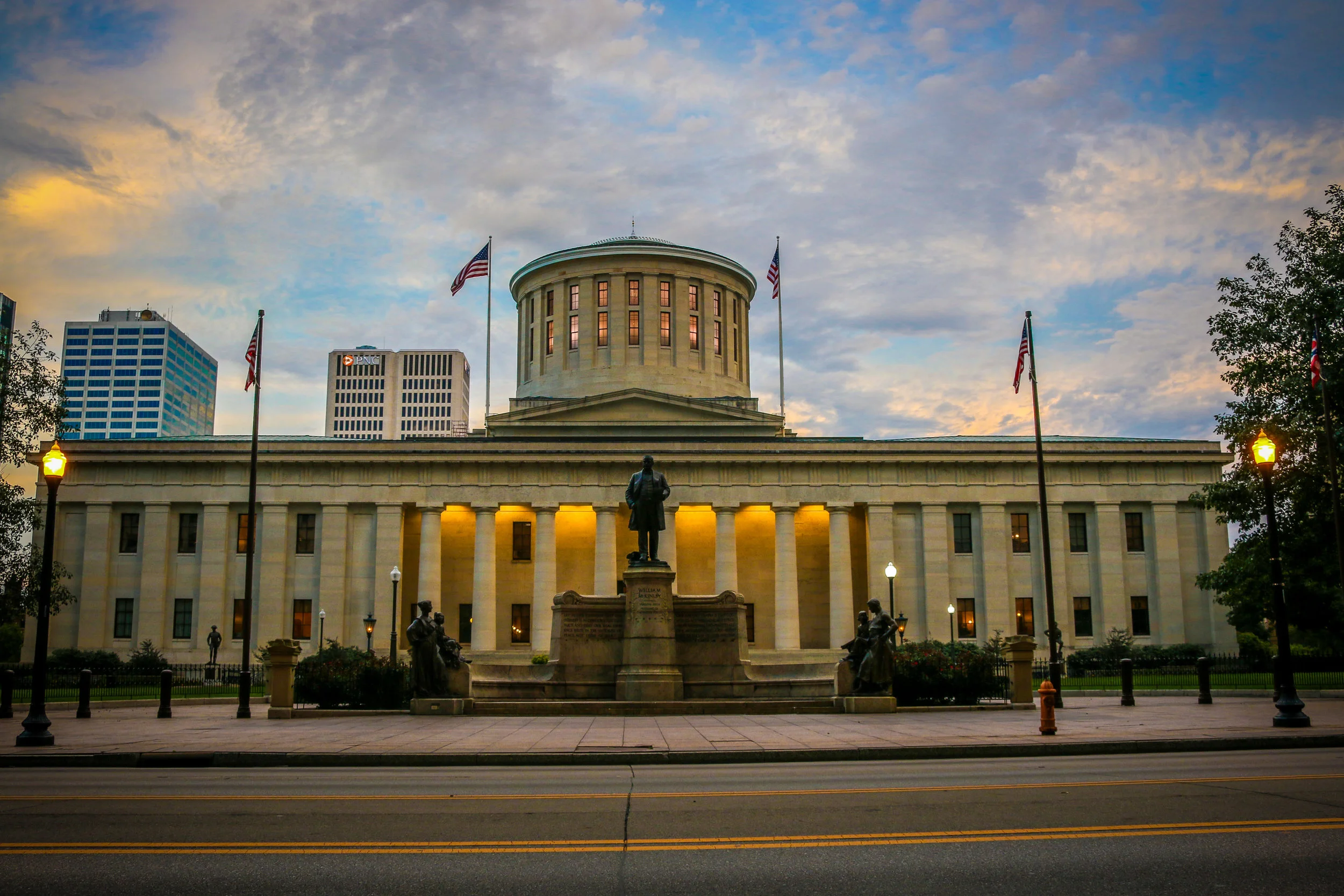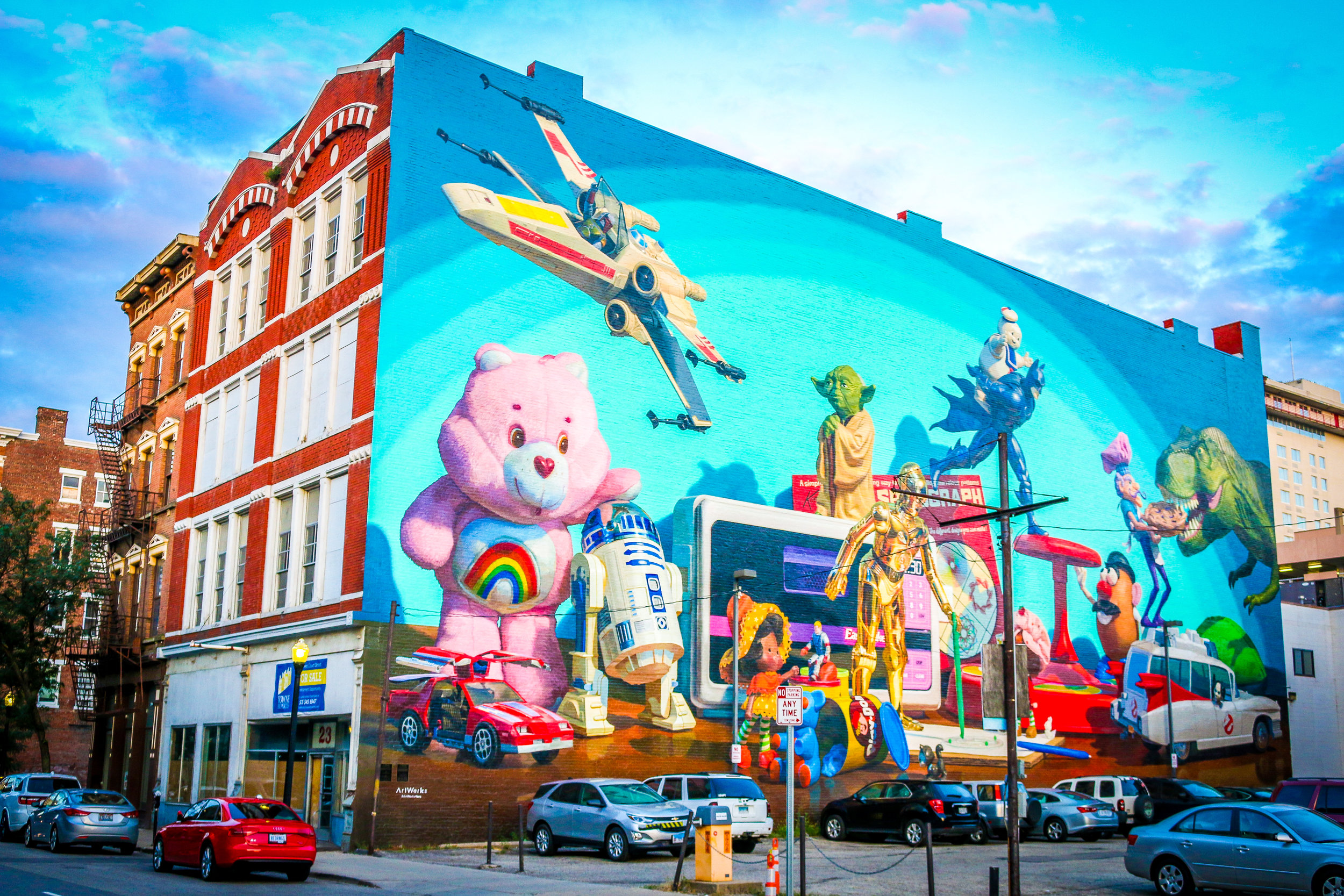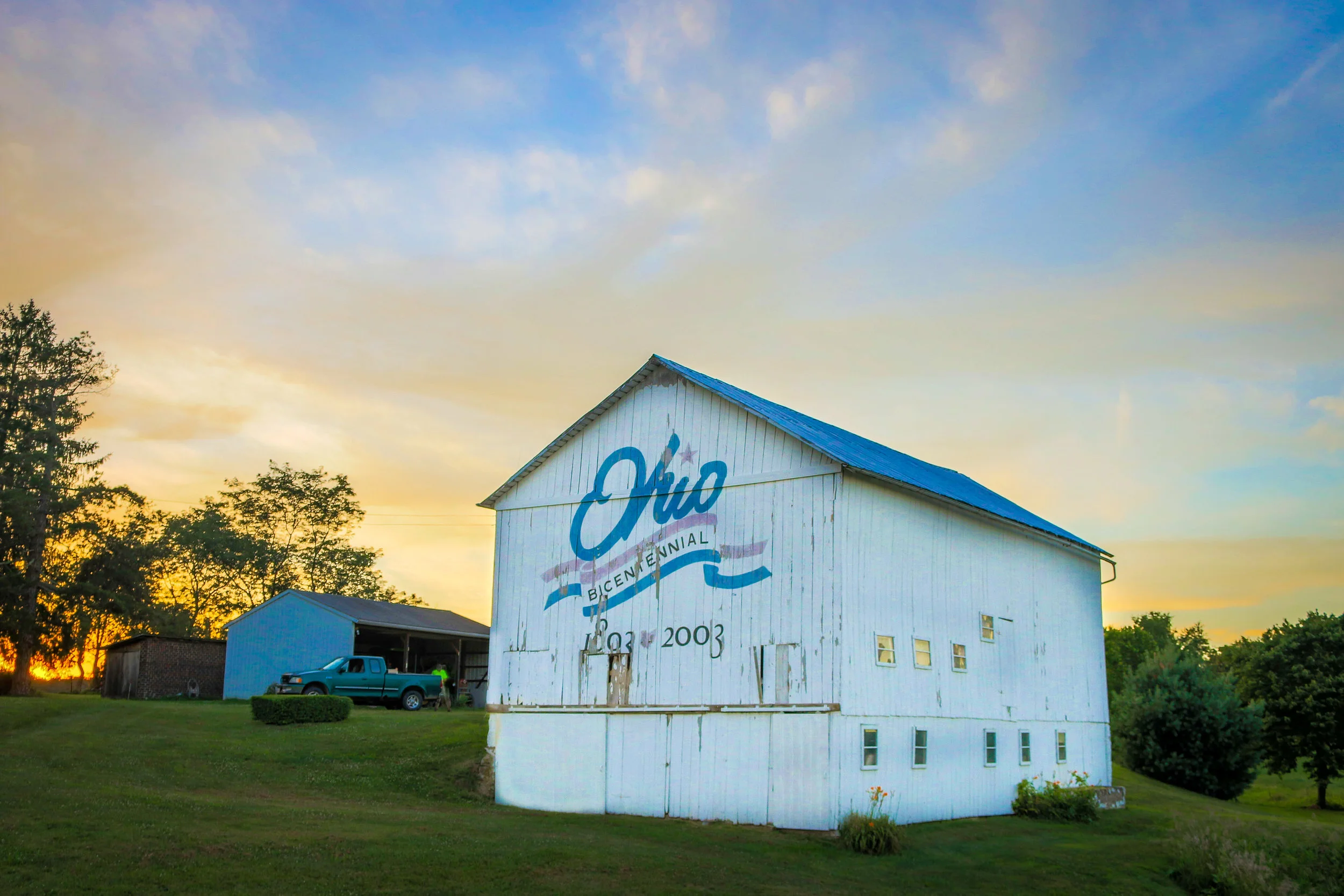It's been another busy but wonderful week out here in Western Ohio. I started the week in Dayton, returned briefly to Cincinnati and then made my way out to Columbus, Ohio's capital city. I've met some great people, taken some sweet photos, learned some interesting history and attended some great events. The weather has turned pretty hot and some amazing Midwestern thunderstorms have passed overhead, but I'm keeping cool and dry and really enjoying my time in the Buckeye State. As I've been driving, I've been enjoying a great podcast called Ohio V. The World. It is an interesting , in depth look at some of the history of the state and it's really given me some great background as I travel. This week has brought me into some of the flat, farm filled landscapes Ohio is most known for, but even these are dotted with cool old farm buildings and Rockwell-esque small towns. It's been another great week exploring all the great things America and Ohio have to offer…
Viewing entries in
Ohio
In March of 1913, massive rainstorms over Easter weekend caused the Miami River to swell and break through the levees built to contain it. Water rushed through downtown Dayton reaching depths of 20 feet. The flood would do $100 million in damage, destroy 20,000 homes and take 360 lives. Miamisburg was devastated with much of the city underwater.
Relief efforts arrived with the Red Cross setting up tent cities to provide shelter to the displaced population. Miamisburg resident Sherman "Cocky" Porter volunteered to try and help feed the people and the relief workers. Trying to feed hundreds of people a hot meal is no easy task, so Porter decided to cook up a huge batch of hamburgers and pass them out to the crowds. They were a hit…
I love baseball. I couldn't quote batting averages off the top of my head nor could I tell you who's won every World Series, I simply love the game. I love the sight of a ball field with its crisp white lines, the call of "cold beer, peanuts, crackerjacks" from the vendors climbing the bleachers and the sound of a well hit ball as it leaves the bat headed for the outfield. I love the history and tradition of the game and how it has often marched alongside, and evolved with, the history of the country. You can probably imagine my excitement then, when, while visiting the city where professional baseball began, I was able to also view the largest private collection of baseball memorabilia in the world.
The Green Diamond Gallery, in suburban Cincinnati, is a magical place filled to bursting with some of the most awesome mementos to the history of the baseball. While it's not a massive place, I spent three hours there trying to take it all in…
The National Air Force Museum in Dayton, Ohio houses a massive collection of aircraft ranging from the very earliest flyers to space-age satellites. Highlights include Boxcar, the plane which dropped the atomic bomb Fat Man on Nagasaki in 1945 and the newly restored legend Memphis Belle. Also on display are all of the retired planes which have carried United States Presidents throughout history. You can go inside the plane which carried John F. Kennedy's body home from Dallas while Lyndon Johnson was being sworn into office on-board. The museum is free and open 7 days a week. While touring the museum, my eyes were drawn to my favorite aspect of old planes: the nose and tail art which was often hand-painted by the airmen themselves. These are often telling of the men who painted them and the situations in which they found themselves, many of them as far from home as they had ever been. Here are some of my favorites from my recent visit to the museum.
When Bob Mills was being wheeled into cancer surgery to treat malignant melanoma he had developed at 53, he did what many people in his situation do: he made a promise to God. He promised that if he got through that ordeal, he would spend the rest of his life helping others with their fight. Not only did he make this promise though, he quantified it. He promised that whatever salary he made, he would give at least that much back to the fight. If you knew one thing about Bob, you'd know he is a man of his word.
Bob did survive, and true to his word, he began a fellowship for a medical student of hematology and oncology. He would hand-pick the recipient and would lay out only two conditions: that they stay and work in the greater Dayton area and that they dedicate a portion of their time to helping those who couldn't afford treatment.
As I've traveled the country, I've visited a lot of small towns. Some are thriving, some are faltering, and some are just plain crumbling. When the Plaza Theater sat empty for almost 15 years in downtown Miamisburg, Ohio, it was symbolic of the latter two. When it opened in 1919, the 700 seat Plaza was the heart of a thriving downtown. People came downtown to do their shopping, catch up on the gossip and see a show. The theater closed its doors in 1968, but the building lived on as the new home of Sor-rel's Western Wear, a successful apparel and equipment store. After a solid 26 year run where the business thrived, the Sorrel family sold their store off in 1994. Eight years later, it was closed and the theater-turned-western-store would sit empty right in the middle of a struggling Main Street. Downtown Miamisburg, like so many small towns, had ceded its business to strip malls and chain stores outside the city limits…
Cincinnati has done a great job of commissioning murals around the city to adorn blank walls and help fill wide open spaces. These murals have changing the whole aesthetic of the city. During my stay I ran across dozens of beautiful murals. These are some of my favorites.
Originally settled in 1788 at the confluence of the Ohio and Licking Rivers, Cincinnati grew to be the largest inland city in the country and the sixth largest overall in the years leading up to the Civil War. In the latter half of the 19th Century, Cincinnati was often referred to as the "Paris of America" due to its many large and beautiful buildings. Today, many of these grand old dames still tower over the city harking back to a time when things were built with style and built to last. I spent most of my time in Cincinnati with wide eyes and my camera whirring away. Here are some of my favorite old buildings ranging from private homes to churches to public buildings. Cincinnati is definitely a city worth visiting for many reasons, but the architecture was definitely what struck me the most. Enjoy!
Sadly leaving Athens County behind, I stopped for a brief visit at the Buckeye Furnace State Memorial. Tucked back in the woods, this was a great place to learn more about the production of pig iron, an industry that brought a lot of wealth to the region. I had the place all to myself but could imagine the small community which once stood there and kept the furnace going. This was another of Appalachia's hard labor industries, and one that disappeared as the iron ore dried up and the nation's demands shifted to steal. It was a cool place to visit.
From there I headed out to the Bob Evans Farm in Rio Grande where I had a big breakfast for lunch and wandered around the property for a while. I learned the story of Bob and how he started with a steakhouse, but soon started making sausage as well. This sausage would catapult his business into one of Ohio's best known names.
Inspired by murals he had seen across the state in Steubenville, Dr. Louis Chaboudy hoped to create something similar in his hometown of Portsmouth. In 1992, he commissioned Robert Dafford to begin work on a project which would last 10 years. Over that time period, Dafford painted over 50 murals which stretch 2200 feet along the Ohio River. These murals tell the history of Sciotto County and of the people who have lived there. It is a wonderful project which I really enjoyed visiting. The local Visitor's Center provides brochures and even a cell phone tour for your visit. Unfortunately I was shooting into the sun while I was there, and all of the murals are different sizes making it difficult to crop them and still have a nice layout for this post, but I still thought that they were wonderful and wanted to share them with you today. Enjoy!
Founded in 1849 on the Ohio river and due to the area's rich iron-ore content, Ironton grew to be one of the largest iron producing regions in the world. The iron industry continued to grow through the latter half of the 19th century, and Ironton prospered. As the area's iron played out and the nations demands transitioned towards steel, Ironton's prominence diminished. The decline of the iron industry, coupled with two devastating floods nearly wiped out Ironton. Today it is a shadow of its former self, but still has some fascinating buildings that hark back to an earlier time. Driving through on a beautiful afternoon, I had to stop and take some photos. It was a really cool city to visit and I don't have to use too much imagination to picture it during its heyday. Enjoy!
I've been very lucky to have spent the last week and a half in Athens County as I start my journey around Ohio. I had the opportunity to visit my friend, Will, and do some work for the local Visitor's Bureau while enjoying many of the events put on by Ohio Brew Week. I'm not used to spending this much time in one location, but I'm sure glad I did. While the city of Athens is a modern college town, the surrounding area has deep roots in an industrial past. First salt, then coal, brick and lumber have all played their role in the history of Athens County. While it's definitely time for me to be moving on with my exploration of Ohio, I didn't want to leave without taking you on a photographic journey through the county and the things I found out here. Enjoy!













